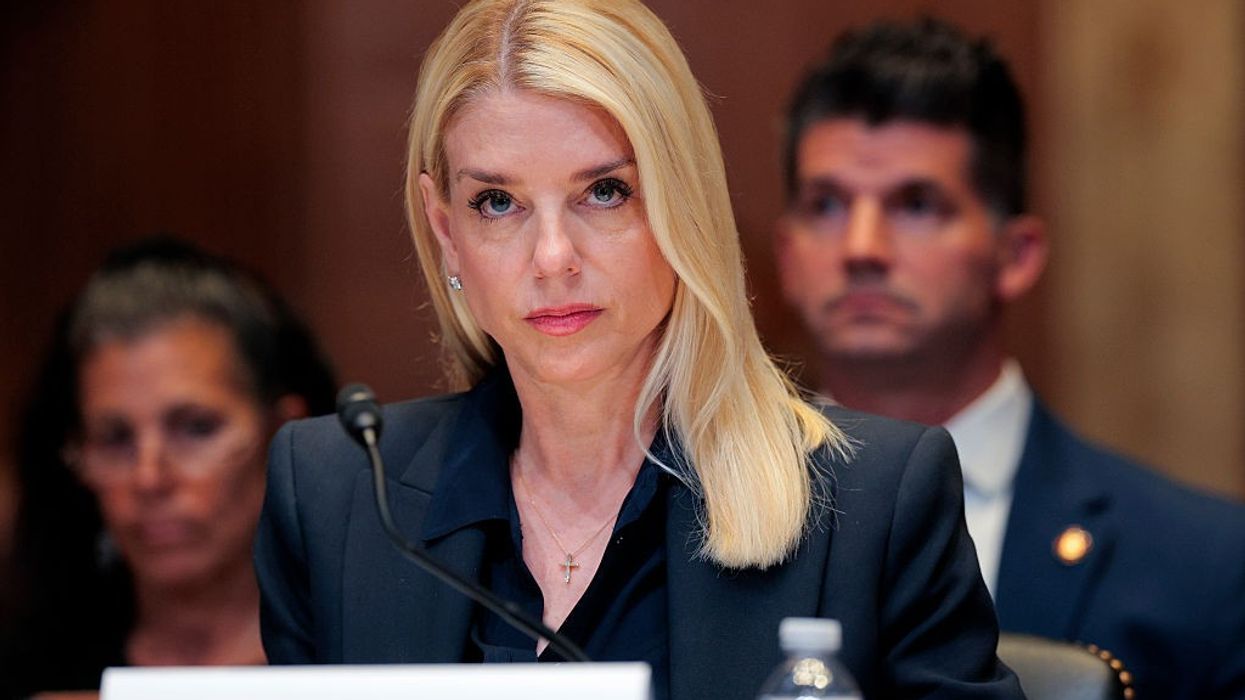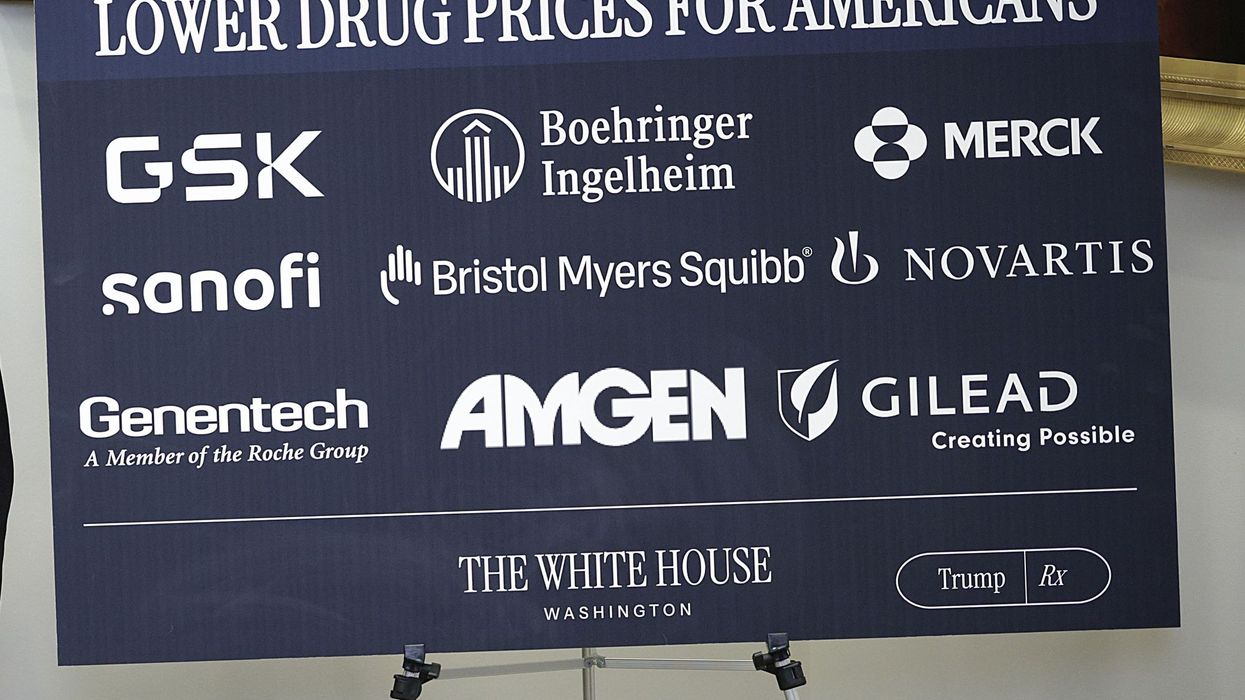January, 28 2015, 01:00pm EDT
Global Plastic Production Rises, Recycling Lags
New Worldwatch Institute analysis explores trends in global plastic production and recycling
WASHINGTON
For more than 50 years, global production of plastic has continued to rise. Some 299 million tons of plastics were produced in 2013, representing a 4 percent increase over 2012. Recovery and recycling, however, remain insufficient, and millions of tons of plastics end up in landfills and oceans each year, writes Gaelle Gourmelon, Communications and Marketing Manager at the Worldwatch Institute, in the Institute's latest Vital Signs Online article (www.worldwatch.org).
Worldwide plastic production has been growing as the durable, primarily petroleum-based material gradually replaces materials like glass and metal. Today, an average person living in Western Europe or North America consumes 100 kilograms of plastic each year, mostly in the form of packaging. Asia uses just 20 kilograms per person, but this figure is expected to grow rapidly as the region's economies expand.
According to the United Nations Environmental Programme, an estimated 22-43 percent of the plastic used worldwide is disposed of in landfills, where its resources are wasted, the material takes up valuable space, and it blights communities. Recovering plastic from the waste stream for recycling or for combustion for energy generation has the potential to minimize these problems. However, much of the plastic collected for recycling in Europe, the United States, Japan, and other industrialized countries is shipped to countries with lower recycling standards. And burning plastic for energy requires air emissions controls and produces hazardous ash, all while being relatively inefficient.
Most plastic scraps from countries that have established collection systems for the material flow to China, which receives 56 percent (by weight) of waste plastic imports worldwide. Indirect evidence suggests that most of this imported plastic is reprocessed at low-tech, family-run facilities with no environmental protection controls, such as proper disposal of contaminants or waste water. There are also concerns that low-quality plastics are not reused but are disposed of or incinerated for energy in plants that lack air pollution control systems. Through its 2010 Green Fence Operation, the Chinese government has started to work to reduce the number of unregulated facilities.
Approximately 10-20 million tons of plastic end up in the oceans each year. A recent study conservatively estimated that 5.25 trillion plastic particles weighing a total of 268,940 tons are currently floating in the world's oceans. This debris results in an estimated $13 billion a year in losses from damage to marine ecosystems, including financial losses to fisheries and tourism as well as time spent cleaning beaches. Animals such as seabirds, whales, and dolphins can become entangled in plastic matter, and floating plastic items-such as discarded nets, docks, and boats-can transport microbes, algae, invertebrates, and fish into non-native regions, affecting local ecosystems.
The environmental and social benefits of plastics must be weighed against the problems that the durability and high volume of this material present to the waste stream. Plastics help to reduce food waste by keeping products fresh longer, allow for the manufacture of life-saving healthcare equipment, reduce packaging mass compared with other materials, improve transportation efficiency, and have large potential for use in renewable energy technologies. But plastic litter, gyres of plastics in the oceans, and toxic additives in plastic products-including colorants, flame retardants, and plasticizers (such as bisphenol A, or BPA)-are raising awareness of and strengthening consumer demand for more sustainable materials.
Along with reducing unnecessary plastic consumption, finding more environmentally friendly packaging alternatives, and improving product and packaging design to use less plastic, many challenges associated with plastics could be addressed by improving management of the material across its life cycle.
Businesses and consumers could increase their participation in collection in order to move plastic waste toward a recovery supply chain, and companies could switch to greater use of recycled plastics. Governments must regulate the plastic supply chain to encourage and monitor recycling.
Report highlights:
- About 4 percent of the petroleum consumed worldwide each year is used to make plastic, and another 4 percent is used to power plastic manufacturing processes.
- In Europe, 26 percent, or 6.6 million tons, of the post-consumer plastic produced in 2012 was recycled, while 36 percent was incinerated for energy generation. The remaining 38 percent of post-consumer plastics in Europe went to landfills.
- In the United States, only 9 percent of post-consumer plastic (2.8 million tons) was recycled in 2012. The remaining 32 million tons was discarded.
The Worldwatch Institute was a globally focused environmental research organization based in Washington, D.C., founded by Lester R. Brown. Worldwatch was named as one of the top ten sustainable development research organizations by Globescan Survey of Sustainability Experts. Brown left to found the Earth Policy Institute in 2000. The Institute was wound up in 2017, after publication of its last State of the World Report. Worldwatch.org was unreachable from mid-2019.
LATEST NEWS
Dems Demand Answers as Trump Photo Disappears From DOJ Online Epstein Files
"What else is being covered up?"
Dec 20, 2025
Congressional Democrats on Saturday pressed US Attorney General Pam Bondi for answers regarding the apparent removal of a photo showing President Donald Trump surrounded by young female models from Friday's Department of Justice release of files related to the late convicted child sex criminal Jeffrey Epstein.
Amid the heavily redacted documents in Friday's DOJ release was a photo of a desk with an open drawer containing multiple photos of Trump, including one of him with Epstein and convicted child sex trafficker Ghislaine Maxwell and another of him with the models.
However, the photo—labeled EFTA00000468 in the DOJ's Epstein Library—was no longer on the site as of Saturday morning.
"This photo, file 468, from the Epstein files that includes Donald Trump, has apparently now been removed from the DOJ release," Democrats on the House Oversight Committee noted in a Bluesky post. "AG Bondi, is this true? What else is being covered up? We need transparency for the American public."
This photo, file 468, from the Epstein files that includes Donald Trump has apparently now been removed from the DOJ release.AG Bondi, is this true? What else is being covered up? We need transparency for the American public.
[image or embed]
— Oversight Dems (@oversightdemocrats.house.gov) December 20, 2025 at 9:30 AM
Numerous critics have accused the Trump administration of a cover-up due to the DOJ's failure to meet a Friday deadline to release all Epstein-related documents and heavy redactions—including documents of 100 pages or more that are completely blacked out—to many of the files.
Deputy Attorney General Todd Blanche responded to the criticism by claiming that "the only redactions being applied to the documents are those required by law—full stop."
"Consistent with the statute and applicable laws, we are not redacting the names of individuals or politicians unless they are a victim," he added.
Earlier this year, officials at the Federal Bureau of Investigation reportedly redacted Trump's name from its file on Epstein, who was the president's longtime former friend and who died in 2019 in a New York City jail cell under mysterious circumstances officially called suicide while facing federal child sex trafficking and conspiracy charges.
Trump has not been accused of any crimes in connection with Epstein.
House Oversight Committee Ranking Member Robert Garcia (D-Calif.) said during a Friday CNN interview that the DOJ only released about 10% of the full Epstein files.
The DOJ is breaking the law by not releasing the full Epstein files. This is not transparency. This is just more coverup by Donald Trump and Pam Bondi. They need to release all the files, NOW.
[image or embed]
— Congressman Robert Garcia (@robertgarcia.house.gov) December 19, 2025 at 5:06 PM
"The DOJ has had months and hundreds of agents to put these files together, and yet entire documents are redacted—from the first word to the last," Garcia said on X. "What are they hiding? The American public deserves transparency. Release all the files now!"
In a joint statement Friday, Garcia and House Judiciary Committee Ranking Member Jamie Raskin (D-Md.) said, "We are now examining all legal options in the face of this violation of federal law."
"The survivors of this nightmare deserve justice, the co-conspirators must be held accountable, and the American people deserve complete transparency from DOJ," they added.
Rep. Ro Khanna (D-Calif.)—who along with Rep. Thomas Massie (R-Ky.) introduced the Epstein Files Transparency Act, which was signed into law by Trump last month and required the release of all Epstein materials by December 19—said in a video published after Friday's document dump that he and Massie "are exploring all options" to hold administration officials accountable.
"It can be the impeachment of people at Justice, inherent contempt, or referring for prosecution those who are obstructing justice," he added.
Keep ReadingShow Less
Israeli Forces Massacre 6 Palestinians Celebrating Wedding at Gaza School Shelter
"This isn't a truce, it's a bloodbath," said a relative of some of the victims, who included women, an infant, and a teenage girl.
Dec 20, 2025
Funerals were held Saturday in northern Gaza for six people, including children, massacred the previous day by Israeli tank fire during a wedding celebration at a school sheltering displaced people, as the number of Palestinians killed during the tenuous 10-week ceasefire rose to over 400.
On Friday, an Israel Defense Forces (IDF) tank blasted the second floor of the Gaza Martyrs School, which was housing Palestinians displaced by the two-year war on Gaza in the al-Tuffah neighborhood of Gaza City.
Al Jazeera and other news outlets reported that the attack occurred while people were celebrating a wedding.
Al-Shifa Hospital director Mohammed Abou Salmiya said those slain included a 4-month-old infant, a 14-year-old girl, and two women. At least five others were injured in the attack.
"It was a safe area and a safe school and suddenly... they began firing shells without warning, targeting women, children and civilians," Abdullah Al-Nader—who lost relatives including 4-month-old Ahmed Al-Nader in the attack—told Agence France-Presse.
Witnesses said IDF troops subsequently blocked first responders including ambulances and civil defense personnel from reaching the site for over two hours.
"We gathered the remains of children, elderly, infants, women, and young people," Nafiz al-Nader, another relative of the infant and others killed in Friday's attack, told reporters. "Unfortunately, we called the ambulance and the civil defense, but they couldn't get by the Israeli army."
The IDF said that “during operational activity in the area of the Yellow Line in the northern Gaza Strip, a number of suspicious individuals were identified in command structures," and that "troops fired at the suspicious individuals to eliminate the threat."
The Yellow Line is a demarcation boundary between areas of Gaza under active Israeli occupation—more than half of the strip's territory, including most agricultural and strategic lands—and those under the control of Hamas.
"The claim of casualties in the area is familiar; the incident is under investigation," the IDF said, adding that it "regrets any harm to uninvolved parties and acts as much as possible to minimize harm to them."
Since the October 7, 2023 Hamas-led attack on Israel, more than 250,000 Palestinians have been killed or wounded by Israeli forces, including approximately 9,500 people who are missing and presumed dead and buried beneath rubble. Classified IDF documents suggest that more than 80% of the Palestinians killed by Israeli forces were civilians.
Around 2 million Palestinians have also been displaced—on average, six times—starved, or sickened in the strip.
Gaza officials say at least 401 Palestinians have been killed since a US-brokered ceasefire between Israel and Hamas took effect on October 10. Gaza's Government Media Office says Israel has violated the ceasefire at least 738 times.
"This isn't a truce, it's a bloodbath," Nafiz al-Nader told Agence France-Presse outside al-Shifa Hospital on Saturday.
Israel says Hamas broke the truce at least 32 times, with three IDF soldiers killed during the ceasefire.
Israeli Prime Minister Benjamin Netanyahu and Yoav Gallant, his former defense minister, are fugitives from the International Criminal Court in The Hague, where they are wanted for alleged war crimes and crimes against humanity in Gaza, including murder and forced starvation.
Israel is also facing a genocide case filed by South Africa at the International Court of Justice, also in The Hague. A United Nations commission, world leaders, Israeli and international human rights groups, jurists, and scholars from around the world have called Israel's war on Gaza a genocide.
Friday's massacre came as Steve Witkoff, President Donald Trump's Mideast envoy, other senior US officials, and representatives of Egypt, Qatar, Turkey, and the United Arab Emirates met in Miami to discuss the second phase of Trump's peace plan, which includes the deployment of an international stabilization force, disarming Hamas, the withdrawal of IDF troops from the strip, and the establishment of a new government there.
Keep ReadingShow Less
Trump's 9 New Prescription Drug Deals 'No Substitute' for Systemic Reform
"Patients are overwhelmingly calling on Congress to do more to lower prescription drug prices by holding Big Pharma accountable and addressing the root causes of high drug prices," said one campaigner.
Dec 19, 2025
"Starting next year, American drug prices will come down fast and furious and will soon be the lowest in the developed world," President Donald Trump claimed Friday as the White House announced agreements with nine pharmaceutical manufacturers.
The administration struck most favored nation (MFN) pricing deals with Amgen, Bristol Myers Squibb, Boehringer Ingelheim, Genentech, Gilead Sciences, GSK, Merck, Novartis, and Sanofi. The president—who has launched the related TrumpRx.gov—previously reached agreements with AstraZeneca, EMD Serono, Eli Lilly, Novo Nordisk, and Pfizer.
"The White House said it has made MFN deals with 14 of the 17 biggest drug manufacturers in the world," CBS News noted Friday. "The three drugmakers that were not part of the announcement are AbbVie, Johnson & Johnson, and Regeneron, but the president said that deals involving the remaining three could be announced at another time."
However, as Trump and congressional Republicans move to kick millions of Americans off of Medicaid and potentially leave millions more uninsured because they can't afford skyrocketing premiums for Affordable Care Act (ACA) plans, some critics suggested that the new drug deals with Big Pharma are far from enough.
"When 47% of Americans are concerned they won't be able to afford a healthcare cost next year, steps to reduce drug prices for patients are welcomed, especially by patients who rely on one of the overpriced essential medicines named in today's announcement," said Merith Basey, CEO of Patients for Affordable Drugs Now, in a statement.
"But voluntary agreements with drug companies—especially when key details remain undisclosed—are no substitute for durable, system-wide reforms," Basey stressed. "Patients are overwhelmingly calling on Congress to do more to lower prescription drug prices by holding Big Pharma accountable and addressing the root causes of high drug prices, because drugs don't work if people can't afford them."
As the New York Times reported Friday:
Drugs that will be made available in this way include Amgen's Repatha, for lowering cholesterol, at $239 a month; GSK's asthma inhaler, Advair Diskus, at $89 a month; and Merck's diabetes medication Januvia, at $100 a month.
Many of these drugs are nearing the end of their patent protection, meaning that the arrival of low-cost generic competition would soon have prompted manufacturers to lower their prices.
In other cases, the direct-buy offerings are very expensive and out of reach for most Americans.
For example, Gilead will offer Epclusa, a three-month regimen of pills that cures hepatitis C, for $2,492 a month on the site. Most patients pay far less using insurance or with help from patient assistance programs. Gilead says on its website that "typically a person taking Epclusa pays between $0 and $5 per month" with commercial insurance or Medicare.
While medication prices are a concern for Americans who face rising costs for everything from groceries to utility bills, the outcome of the ongoing battle on Capitol Hill over ACA tax credits—which are set to expire at the end of the year—is expected to determine how many people can even afford to buy health insurance for next year.
The ACA subsidies fight—which Republicans in the US House of Representatives ignored in the bill they passed this week before leaving Capitol Hill early—has renewed calls for transitioning the United States from its current for-profit healthcare system to Medicare for All.
"At the heart of our healthcare crisis is one simple truth: Corporations have too much power over our lives," Rep. Pramila Jayapal (D-Wash.), former chair of the Congressional Progressive Caucus, said on social media Friday. "Medicare for All is how we take our power back and build a system that puts people over profits."
Jayapal reintroduced the Medicare for All Act in April with Rep. Debbie Dingell (D-Mich.) and Senate Health, Education, Labor, and Pensions Committee Ranking Member Bernie Sanders (I-Vt.). The senator said Friday that some of his top priorities in 2026 will be campaign finance reform, income and wealth inequality, the rapid deployment of artificial intelligence, and Medicare for All.
Earlier this month, another backer of that bill, US Sen. Chris Van Hollen (D-Md.), said: "We must stop tinkering around the edges of a broken healthcare system. Yes, let's extend the ACA tax credits to prevent a huge spike in healthcare costs for millions. Then, let's finally create a system that puts your health over corporate profits. We need Medicare for All."
It's not just progressives in Congress demanding that kind of transformation. According to Data for Progress polling results released late last month, 65% of likely US voters—including 78% of Democrats, 71% of Independents, and 49% of Republicans—either strongly or somewhat support "creating a national health insurance program, sometimes called 'Medicare for All.'"
Keep ReadingShow Less
Most Popular


